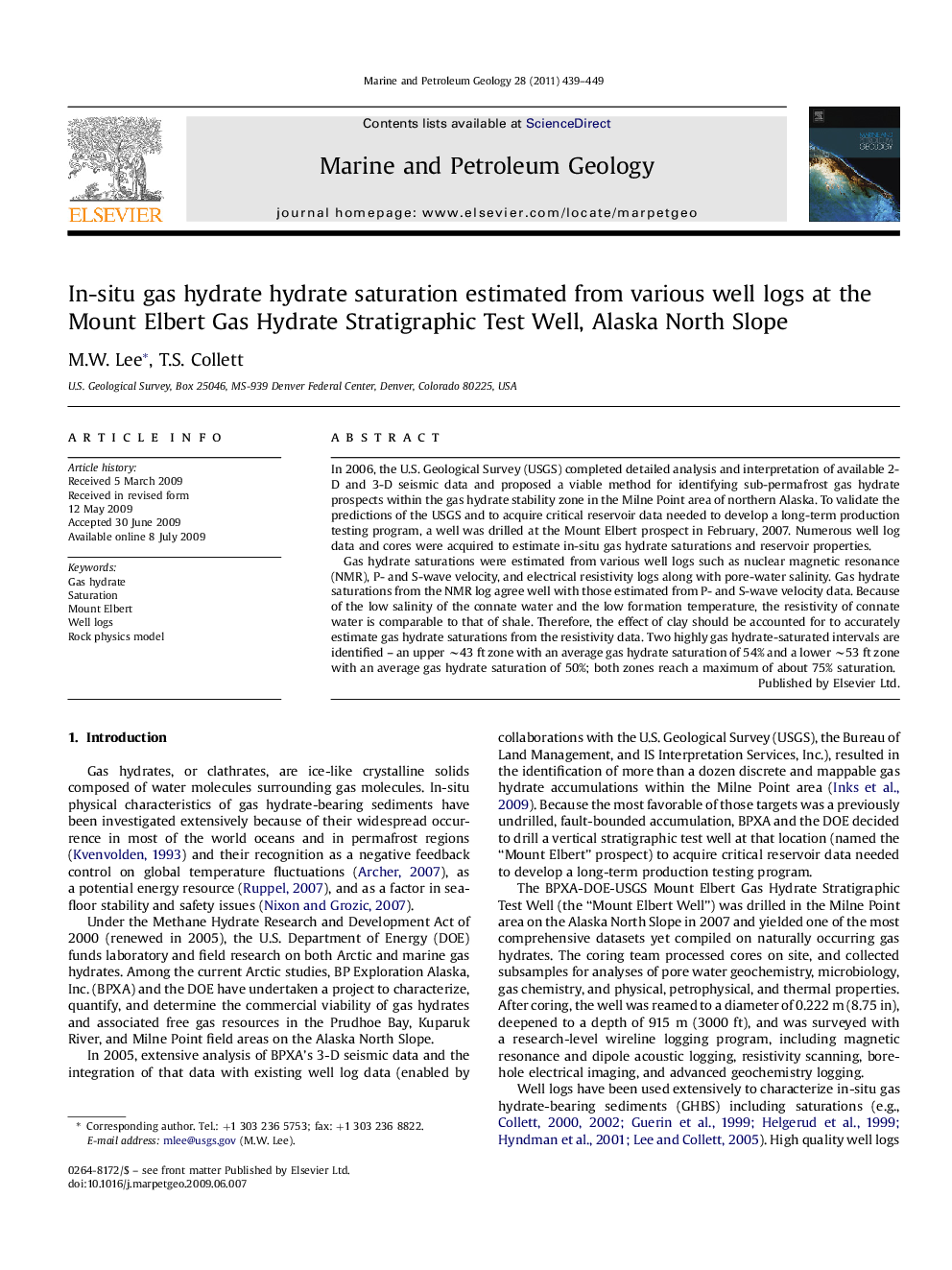| Article ID | Journal | Published Year | Pages | File Type |
|---|---|---|---|---|
| 4696100 | Marine and Petroleum Geology | 2011 | 11 Pages |
In 2006, the U.S. Geological Survey (USGS) completed detailed analysis and interpretation of available 2-D and 3-D seismic data and proposed a viable method for identifying sub-permafrost gas hydrate prospects within the gas hydrate stability zone in the Milne Point area of northern Alaska. To validate the predictions of the USGS and to acquire critical reservoir data needed to develop a long-term production testing program, a well was drilled at the Mount Elbert prospect in February, 2007. Numerous well log data and cores were acquired to estimate in-situ gas hydrate saturations and reservoir properties.Gas hydrate saturations were estimated from various well logs such as nuclear magnetic resonance (NMR), P- and S-wave velocity, and electrical resistivity logs along with pore-water salinity. Gas hydrate saturations from the NMR log agree well with those estimated from P- and S-wave velocity data. Because of the low salinity of the connate water and the low formation temperature, the resistivity of connate water is comparable to that of shale. Therefore, the effect of clay should be accounted for to accurately estimate gas hydrate saturations from the resistivity data. Two highly gas hydrate-saturated intervals are identified – an upper ∼43 ft zone with an average gas hydrate saturation of 54% and a lower ∼53 ft zone with an average gas hydrate saturation of 50%; both zones reach a maximum of about 75% saturation.
